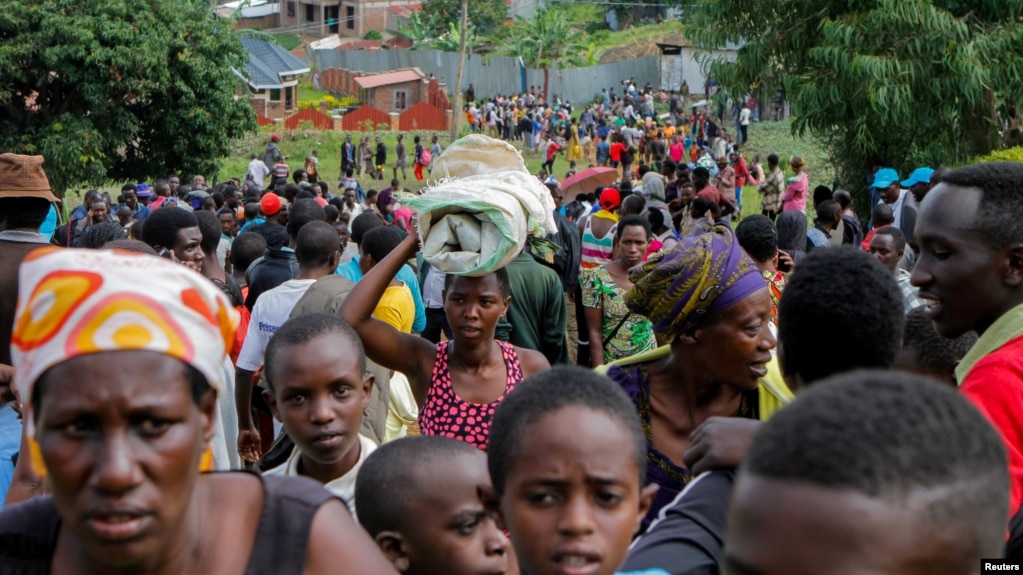 |
| Shoppers queue to be served at a till at Nakumatt Westgate in Nairobi. The middle class usually does the bulk of their shopping in supermarkets. Picture: File |
Stanslaus Kimani, 27, lives in a two-bedroomed flat in Nairobi’s South C estate, and works at one of the city’s investment banks. He is also a Bachelor of Commerce student at the University of Nairobi, and pays school fees for his younger brother in secondary school.
His daily expenses total a little over $20 a day. According to a recent report by the African Development Bank (ADB), that puts him in the “high income” or rich class — in the same ranks as Nigerian businessman Aliko Dangote, the richest man in Africa with a net worth of about $13.8 billion.
Mr Kimani doesn’t agree with that categorisation. “Twenty dollars a day is not rich. Certainly I’m not poor, but there are people in this city that can comfortably spend more than Ksh 15,000 ($175) a day. Those people could be called rich. I think of myself as somewhere in the middle.”
Africa’s middle class has been growing modestly in the past decade, but ADB admits that it is difficult to define who exactly falls into this group, and even harder still to establish how many middle class people there are in Africa.
The report estimates the size of the middle class — those spending between $2 and $20 a day — at about 313 million people, or 34.3 per cent of the continent’s population — a spike from 111 million two decades ago.
In East Africa, the figure comes to a total of about 29.3 million, representing an average of 22.6 per cent of the population; 44.9 per cent of Kenya’s population, 18.7 per cent in Uganda, 12.1 per cent in Tanzania, 7.7 per cent in Rwanda, and 5.3 per cent in Burundi.
The report notes that a well established middle class is catalytic to the growth of democratic space. It is certainly no coincidence that two of the countries with the largest percentage of middle class citizens in Africa —Tunisia (89.5 per cent) and Egypt (79.7 per cent) — reached a tipping point and overturned their corrupt, repressive regimes.
Experts assert that long term economic growth in the region is inexorably linked to the rise of the middle class consumer. Global management consulting firm McKinsey & Company reports that from 2005 to 2008, consumer spending across the continent increased at a compound annual rate of 16 per cent, more than twice the GDP growth rate.
In 2008, nearly 85 million households in Africa, like Kimani’s, had an income of above $5,000 a year, the level at which households begin to spend more than half of their income on items other than food. McKinsey projects that the number of households with discretionary income could rise by 50 per cent in the next decade, reaching 128 million households. By 2030, the continent’s top 18 cities are expected to have a combined spending power of $1.3 trillion.
In Nigeria, for example, the collective buying power of households earning $1,000 to $5,000 a year doubled from 2000 to 2007, reaching $20 billion: Nearly seven million additional households have enough discretionary income to take their place as consumers.
Nairobi economist Ignatius Gabriel says the ability to do the bulk of household shopping in a supermarket is one of the filters that separates the poor and the middle class.
“Once you are able to do your household shopping in a supermarket, then you have begun to move away from the ‘kadogo’ economy that characterises poor households, especially in urban areas. You can’t bargain or pay on credit in a supermarket, and the tiny sizes of goods are usually not available. It means you are no longer living hand-to-mouth.”
Companies targeting the middle class consumer have experienced a boom in recent years, particularly in consumer goods, retail banking, telecom and housing.
In 2010, the turnover of Kenyan supermarket chain Nakumatt increased by 15 per cent, and 11 new stores were opened, nine in Kenya and two in Uganda, bringing the total number of stores in the region to 32. This year, expansion into Tanzania is in the offing. In Rwanda, Nakumatt has signed up to a new location in Kigali and is looking at more locations in the country.
But other analysts believe that this apparent growth of purchasing power should be tempered with caution, as it could actually be a sign of widening inequality.
flashad










